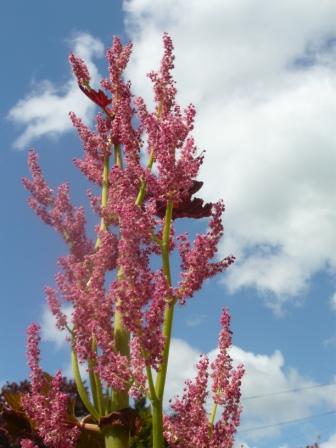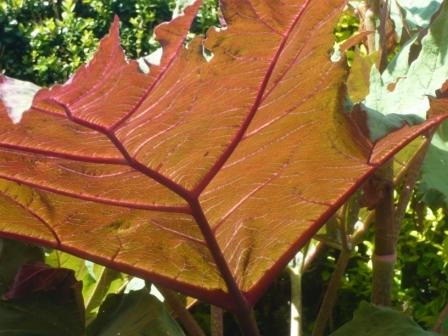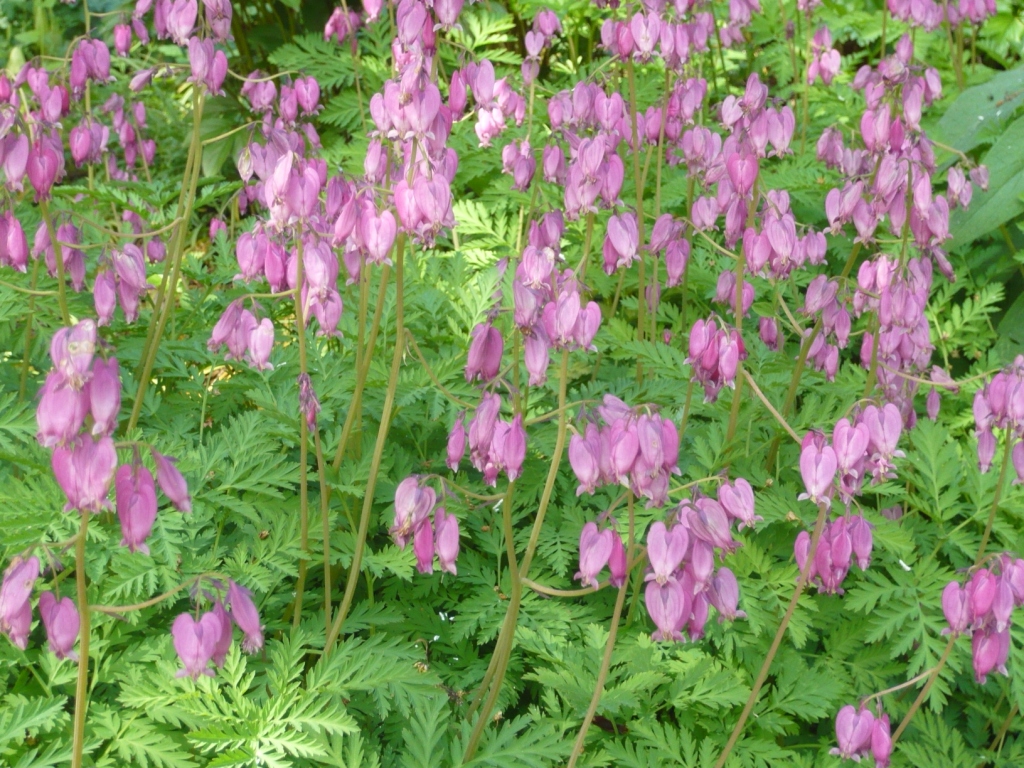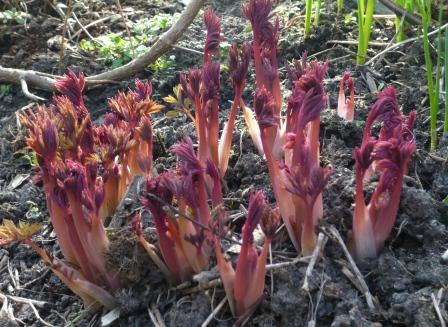
The economies of the world are waiting for a sign of the green shoots of a spring recovery. This Dicentra plant shows that not all good things are green and I love to seek out red shoots amongst my plants.
Other notable red shoots come in spring from the herbaceous Peonies and from Rhubarb plants but back to the Dicentra family or bleeding heart for a moment. The plants are easy to grow and reliable perennials whose clump grows each year. They resent disturbance so are hard to split for propagation but root cuttings from the edge of clumps are not too hard to strike.

Dicentra Varieties to Try Growing
- Dicentra spectabilis is the variety above that will flower with dark pink heart shaped flowers. There is also a white version sold under the unsurprising name of Alba but this is generally Dicentra eximia.
- Dicentra formosa has cherry-red hearts that dangle like lockets on arching stems above mounds of fern like foliage. Also nicknamed Dutchmans Breeches.
- Bulb forming Dicentra cucullaria and Dicentra canadensis are cream or white in flower but retain the distinctive Dicentra fern like foliage.
- Dicentra scandens is a yellow flowered climbing species that I not found to be hardy.
- There are 19 species of Dicentra from America and Asia.
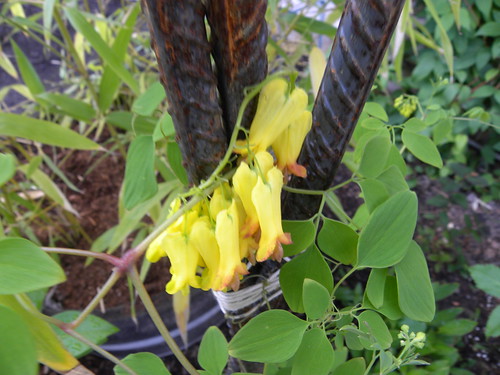
Growing Tips For Dicentra Formosa
- The finer leaves grow well on the edge of woodland.
- The grey leaved forms are OK under deciduous trees or shrubs but will stand more sun and can be used in alpine gardens.
- Heavy clay soil needs improving with sharp grit and a granular feed in early spring.
- The outer edges of plants are more vigorous than the centres. Use these to form new plants.

‘Dicentra cucullaria (Dutchman’s breeches) is a flowering plant in the family Fumariaceae, native to North America. It occurs mainly in the eastern half of the continent, from Nova Scotia and southern Quebec west to eastern North Dakota, and south to northern Georgia and eastern Oklahoma; there is also a disjunct population in Idaho, Oregon and Washington. It typically grows in rich woods. The common name Dutchman’s breeches derives from their white flowers that look like white breeches.’
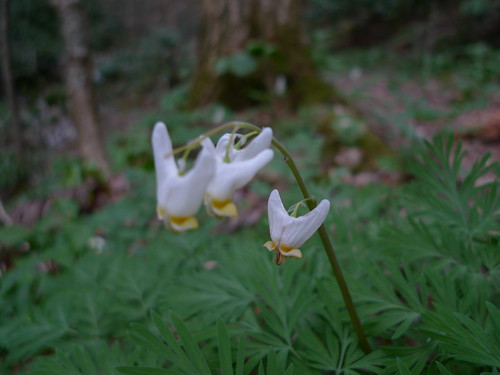
Credits
Dicentra King of Hearts & Ivory Hearts by peganum CC BY-SA 2.0
Dicentra scandens by gnomicscience CC BY-NC 2.0
Dicentra cucullaria by aposematic herpetologist CC BY-NC 2.0
Dicentra cucullaria by dmott9 CC BY-ND 2.0
